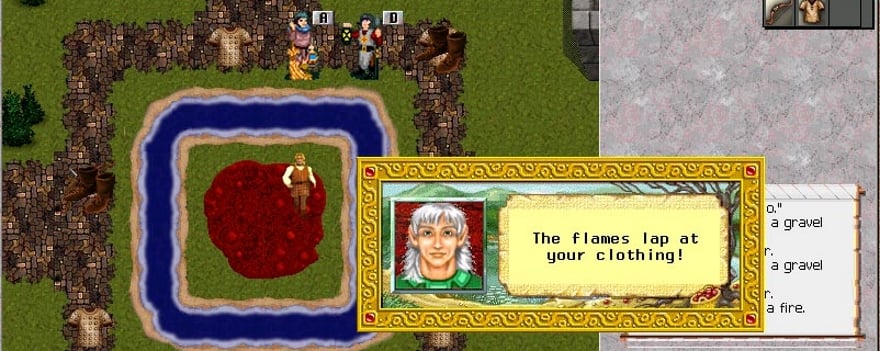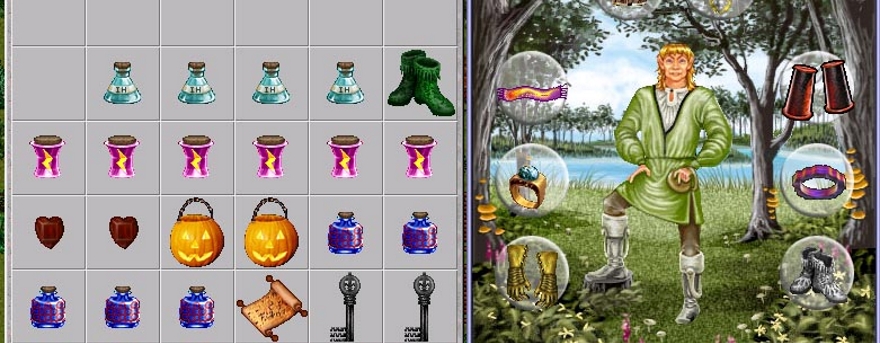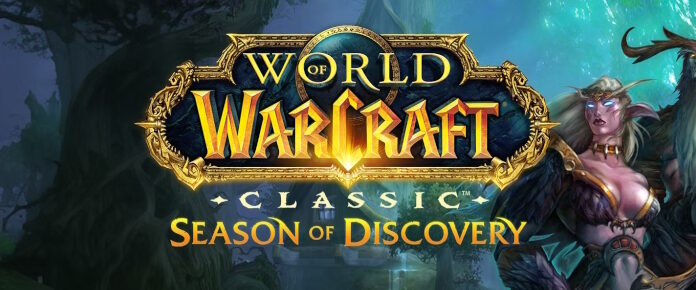
Kingdom of Drakkar, also known as Drakkar or even Kingdom of Drakkar II, is a really odd duck among the annals of MMO history. While being very small potatoes for the industry as a whole throughout its entire lifespan, it is notable for an extraordinary long run (it began in the 1980s, people!) that’s traversed through several format changes and handlers.
I’ve seen Drakkar described, somewhat unkindly, as a “shoddier Ultima Online,” but I think that is a surface judgment that doesn’t take the effort to get to know the game or its legacy. There must be something to this game if it’s been around for three decades, yes? Let’s find out!
 From the realm of ASCII
From the realm of ASCII
Drakkar had its roots in a 1984 MUD called Realm, which was created by computer programmer Brad Lineberger. This lesser-known relic from that era was written in fortran, used a whopping 16KB of memory, and connected around 40 players at a time.
Lineberger and a new company called Tantalus decided to upgrade Realm by making a graphical front end (FE) that was retitled Kingdom of Drakkar. The project took Lineberger three years to make, after which he debuted the online RPG in 1989.
The inspiration for Drakkar came from several contemporaries. “The storyline is from a seven-year D&D campaign that I ran,” Lineberger said in an interview. “It was also heavily influenced by Moria, Hack, Empire, and Islands of Kesmai.” The story of Drakkar involved an Earth that was ruined by floods and beset upon by an unspeakable evil.
Drakkar was a visual step up from the text-based MUDs, offering crude (yet colorful!) 8-bit graphics and a mouse-driven interface through which players could explore this fantasy land. Even better, the improved code and hardware allowed up to 200 people to connect at a time over Compuserve, making this the first graphical small-scale MMO offered over the internet.
“We had over 200 simultaneous on a decsystem ULTRIX box,” Lineberger told me over email. “It was an incredible sight, and it blew the dial-up connections away. You had to have an Amiga to be around all the people due to performance reasons.”
As a game, however, Drakkar was fairly simple. Players created a character from one of six races and seven classes, and sallied forth from there to kill, loot, crawl through dungeons, and train up skills. Its top-down isometric viewpoint is probably what leads to its inevitable comparison with Ultima Online, although Drakkar was much more of a traditional RPG than a sandbox. One neat little touch that it had was a generous loot table, as any mob had a chance of doling out a high-quality piece of gear (versus needing to camp certain mobs for the best loot).
Drakkar did have one important rule that separated itself from many of its brethren, which was a strict rule against player killing (which apparently could be done, just wasn’t allowed). Players who accidentally attacked another could — and I am dead serious here — hug their accidental victim to avoid any further retribution by the game.
 “Massively multiplayer” is born
“Massively multiplayer” is born
Lineberger, Tantalus, and Kingdom of Drakkar was soon folded into a new online game platform called MPG-Net in 1991. MPG-Net was a competitor of the several online services of the time, including AOL and CompuServe, but if you’ve never heard of this particular platform, you’re not alone. MPG-Net struggled to gain an audience the size of the other companies, seeing just 3,000 subscribers in 1992 and only climbing to 25,000 by its peak later in the decade. Initially, players had to cough up between $3 to $5 an hour to connect over dial-up, although that cost dropped to $9.95 a month later on.
Kingdom of Drakkar became the flagship RPG of MPG-Net and was positioned against other online RPG rivals. It was about this time that the language that people used to describe these games evolved.
“A little-known (and little-believed) fact is that the term ‘massively multiplayer’ was termed at the MPG-Net office in Key West, Florida, during a meeting of our people and and the Legends of Kesmai people,” Lineberger told me. “We were trying to differentiate between what Drakkar and Kesmai were capable of doing from these eight-player games that called themselves ‘multiplayer.'”
Lineberger initially licensed Drakkar to MPG-Net before selling the rights to the game entirely. Taking Drakkar to the next level was something that he worked on during the ’90s, creating a new version called Kingdom of Drakkar II (which later was merged back into the original game) and making two aborted attempts at a 3-D adaptation. He also worked on a couple of other MMOs that never made it to the market: Judgment Phoenix (an MMOFPS) and DragonGard (a fantasy MMO).
MPG-Net was eventually merged with iMagic in 1998, which spelled the end of that era. Drakkar lived on, although by then Lineberger had left the company.
 In the zone, the Drakkarzone
In the zone, the Drakkarzone
As we’ve seen in several other columns here on The Game Archaeologist, MMOs didn’t thrive on digital game platforms once the 2000s hit. Drakkar languished until Lineberger repurchased the rights to the title in 2001 and decided to give it a new home.
In 2002, Lineberger formed a new company called Drakkarzone to handle the game and relaunched Drakkar with new 24-bit graphics and a free-to-play hybrid model. Players were later given the option in 2006 to toggle back to the old “legacy” graphics if desired.
However, working on Drakkar had to take a backseat due to Lineberger’s position as CTO of Icarus Studios (you might remember that as the studio originally responsible for Fallen Earth). The conflict of interest from working at an MMO studio and running another one on the side kept him from actively developing for Drakkar, although this has since been resolved as Lineberger left Icarus in 2012.
When asked what he enjoyed seeing among players in Drakkar, Lineberger commented, “I like watching people think of creative ways to get through creatures and puzzles I create. People think that I hate solved puzzles, but the truth is that I hate unsolved puzzles.”
The game grew over the years, with new content being added by Lineberger when time allowed. Drakkar’s scope expanded to over 250,000 “tiles.” Unlike most MMOs, Drakkar uses a set board game-like structure for its maps, placing objects on tiles and moving characters from one to the next. This mimicked the original MUD structure, and while things “moved,” there was never any animation added to the game to show, say, walking between tiles. Mounts are another common MMO feature that Drakkar lacks.
I asked Lineberger why he thought Drakkar had lasted so long and what it has contributed to the industry. “I think the magic of Drakkar is the community,” he wrote back, “and the fast hack/slash/quit model of the game (kill a few critters, then exit and do something else). We also were one of the first true graphical MMO games to have resource competitions. This creates a community of people wanting to help each other.”
Staking out claims for prized possessions wasn’t the only thing that brought players together, he told me. “Death in Drakkar often means you get ‘stripped’ with items dropping to the ground needing recovery, and this is another community builder. Also, the chat room as always been closely tied to the game. You can exit, ask for help, and head back in. We also have ‘open party’ systems, where the party has a name, and you simply join the party by name to share experience, which allowed for ENORMOUS parties sharing experience.”
Drakkar’s influence even left a profound impact on one up-and-coming developer. Villagers & Heroes’ Damon Slye wrote in to say how much Drakkar meant to him: “I played this game back in 1993 with a bunch of my colleagues at Dynamix. It was an excellent game. It was well balanced and a lot of fun. I spent thousands of hours playing it.”
So there you have it: a very old-school MMO that’s a living timeline of the industry, from MUDs to free-to-play and beyond. And the best part is? You can still play it today. I want to thank Brad Lineberger for his assistance in fleshing out this retrospective, as Drakkar is obviously a labor of love to him.
 Believe it or not, MMOs did exist prior to World of Warcraft! Every two weeks, The Game Archaeologist looks back at classic online games and their history to learn a thing or two about where the industry came from… and where it might be heading.
Believe it or not, MMOs did exist prior to World of Warcraft! Every two weeks, The Game Archaeologist looks back at classic online games and their history to learn a thing or two about where the industry came from… and where it might be heading.














